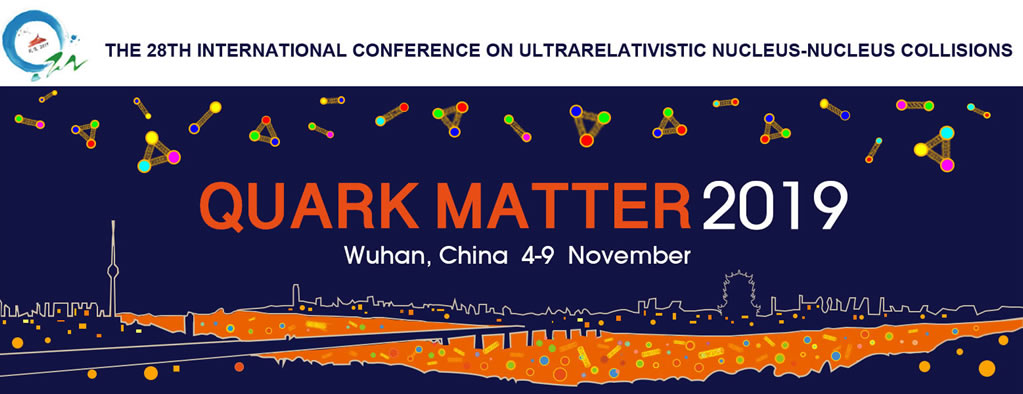Speakers
Description
Fluctuations in conserved charges such as net charge (Q), net strangeness (S) and net baryon (B) are good probes of the QCD phase transition and the critical point [1]. The QCD-based models suggest that the moments of the conserved charge distributions are related to the correlation length of the system as: $\langle (\delta N)^{2} \rangle$ $\sim$ $\xi^{2}$, $\langle (\delta N)^{3} \rangle$ $\sim$ $\xi^{4.5}$ and $\langle (\delta N)^{4} \rangle$ $\sim$ $\xi^{7}$, which are expected to take large values near the critical point [2]. As discussed in Ref [3], one can, however, remove the model dependence, by carefully constructing mixed cumulants and their ratios using the protons and pions produced in heavy-ion collisions. Five constructed ratios such as: $\kappa_{3p}\kappa_{2\pi}^{3/2}$/$\kappa_{3\pi}\kappa_{2p}^{3/2}$, $\kappa_{4p}\kappa_{2\pi}^{2}$/$\kappa_{4\pi}\kappa_{2p}^{2}$, $\kappa_{4p}^{3}\kappa_{3\pi}^{4}$/$\kappa_{4\pi}^{3}\kappa_{3p}^{4}$, $\kappa_{2p2\pi}^{2}$/$\kappa_{4\pi}\kappa_{4p}$ and $\kappa_{2p1\pi}^{3}$/$\kappa_{3p}^{2}\kappa_{3\pi}$ (where $\kappa_{ipj\pi}$ is mixed cumulant of $i^{th}$ order in proton and $j^{th}$ order in pion) are expected to become unity near the presence of the QCD critical point [3]. In this poster, we present the first results on the centrality dependence of proton-pion mixed cumulants and their ratios measured at the midrapidity region and for transverse momentum range of 0.4 $<$ $p_{T}$ $<$ 2.0 GeV/c in Au+Au collisions at $\sqrt{s_{NN}}$ = 19.6, 27 and 200 GeV. Protons and pions are identified using the Time Projection Chamber and Time of Flight detectors in the STAR experiment. The collision energy, centrality and rapidity dependence of the mixed cumulants and their ratios will be shown. Physics implications of these results, as well as comparison with transport (UrQMD) model calculations, will also be presented.
[1] M. A. Stephanov, K. Rajagopal and E. Shuryak, Phys. Rev. D 60 (1999) 114028.
[2] M.A. Stephanov, Phys. Rev. Lett. 102 (2009) 032301.
[3] C. Athanasiou, K. Rajagopal and M. Stephanov, Phys. Rev. D 82, 074008 (2010).
